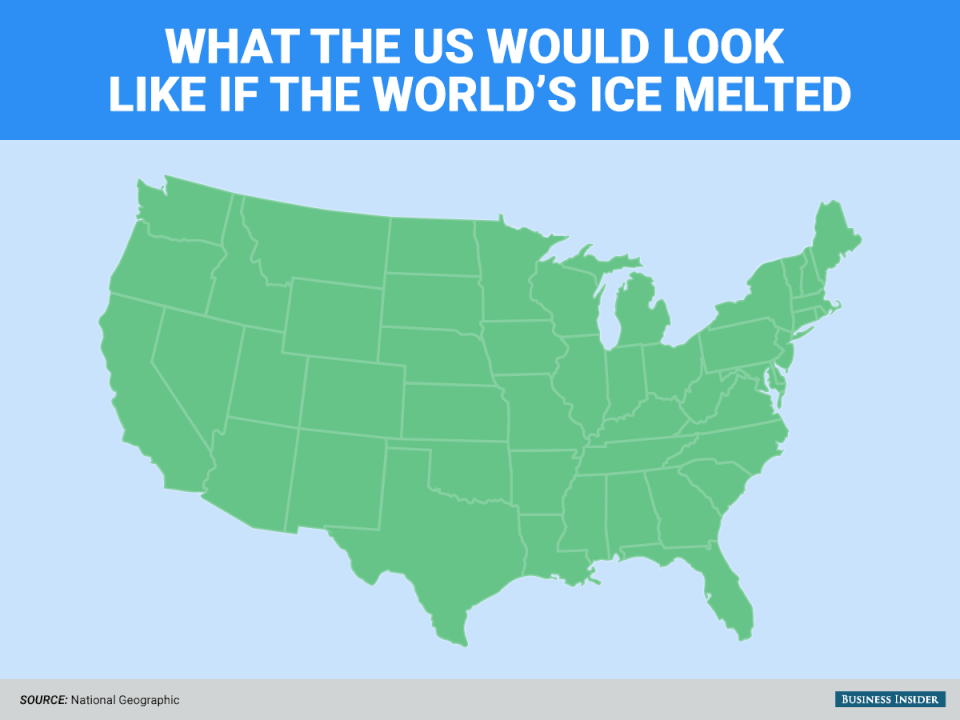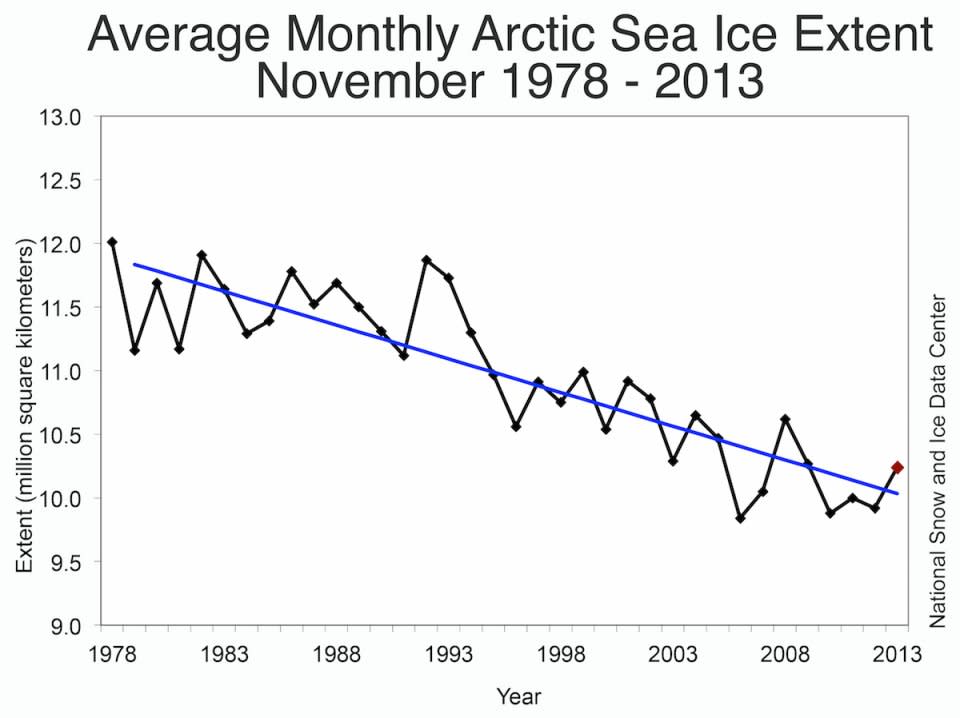The US will be unrecognizable by the end of this century

Mario Tama/Getty Images
It’s hot outside, and calling it a trend would be an understatement. The warming of the planet has been relentless, according to scientific surveys.
Miserably hot summers are not the worst problem we face in the coming decades. Rising seas, an uptick in hurricanes and wildfires, and more invasive insects are already beginning to transform the United States.
Ali Sundermier contributed to an earlier version of this post.
As oceans get warmer and northern sea ice begins to melt, sea levels will rise, increasing the frequency of floods. Rising temperatures will also cause land ice, such as mountain glaciers and giant ice sheets, to melt.
Sources: “IPCC Fourth Assessment Report: Climate Change 2007,” NASA

Summers will be extreme, since climate change lengthens summer months and makes them hotter. By the 2050s, New York City could see as many as seven heat waves per year, with maximum temperatures at or above 90 degrees Fahrenheit for about two months’ worth of days — twice what we currently experience.

Sources: “Shifting Cities” by Climate Central, Annals of the New York Academy of Sciences
As climate change drives up temperatures, wildfire seasons in the western US will begin earlier. Fires will also last longer and burn more intensely.

Source: National Wildlife Federation
Insects reproduce when it’s warm out. As average temperatures go up, critters like wasps and mosquitoes will stick around and mate longer.

Source: “National Climate Assessment“
On the US East Coast, the Asian tiger mosquito’s stomping ground is expected to increase by as much as 33% by the end of the century.

Source: PLOS One
Warming temperatures also facilitate the spread of tropical diseases. As insects like mosquitoes and parasites move into new areas, they bring dangerous diseases like malaria and dengue fever.

Source: Time
Warmer weather means that some of your favorite foods — including apples, honey, and salmon — will become scarce. Stress from the summer heat will also affect cows and other livestock.

Source: New York State climate-change report (ClimAID)
Allergy season will worsen. The rising temperatures will make growing and allergy seasons longer. And carbon dioxide, the primary cause of climate change, makes plants grow faster and increases the amount and potency of pollen.

Source: “Extreme Allergies and Climate Change“
Beaches will quite literally get washed away. In New York City, “long-term coastal erosion is 100% probable” for Coney Island, Brooklyn, the Rockaways, Queens, and South Shore, Staten Island, according to a city report.

Source: New York City Hazard Mitigation Plan
Eventually, entire sections of New York City will be permanently submerged. Rising seas have already increased water levels near in the area by nearly 1.5 feet since the mid-1800s. As a result, dangerous waves are now as much as 20 times more likely to overwhelm the Manhattan seawall than they were 170 years ago.

Source: “Increasing Storm Tides In New York Harbor, 1844-2013,” Geophysical Research Letters, May 2014
That poses major risks to transit systems. Parts of John F. Kennedy International and LaGuardia airports sit just 2 to 6 feet above sea level, and storms frequently produce flood waters higher than that. Hurricane Sandy’s surge waves were 14 feet tall.

Source: “Increasing Storm Tides In New York Harbor, 1844-2013,” Geophysical Research Letters, May 2014
Wipeouts like Hurricane Sandy will be recurring events. While our grandparents most likely lived through only one storm of Sandy’s scale, our grandchildren can expect to see at least 20 in their lifetimes.

Source: National Oceanic and Atmospheric Administration
West Coast cities face similar risks. If the sea level rises 4.6 feet over the next century, as some predictions suggest, then the number of Californians exposed to risk from a hundred-year flood could nearly double to 480,000 people.

Source: “National Climate Assessment“
Climate change causes an increase in all kinds of extreme weather — heat waves are hotter, rain is heavier, and winter storms are more frequent and intense. Extreme weather is one of the leading causes of large-scale power outages in the US, so more of it means more blackouts.

Source: Time
Winter will be no escape from the effects of climate change. “Snowmageddons” will become the norm every year. In the most likely scenario, rain and snowfall across New York City would increase by about 5% by end of the decade, about 7% by midcentury, and about 9% by the 2080s.

Source: “Weakening of the Stratospheric Polar Vortex by Sea-Ice Loss,” Nature, January 2014
Across the globe, tens of thousands of people have already been forced to abandon their homes because of the effects of climate change. If things continue at this pace, the UN estimates that as many as 250 million more will face the same fate by 2050.

Source: United Nations
It will be a very different world.

The post The US will be unrecognizable by the end of this century appeared first on Business Insider.

 Yahoo Finance
Yahoo Finance 
